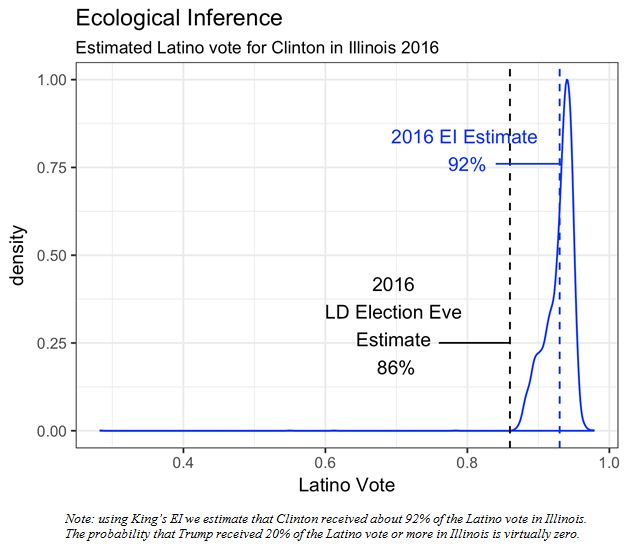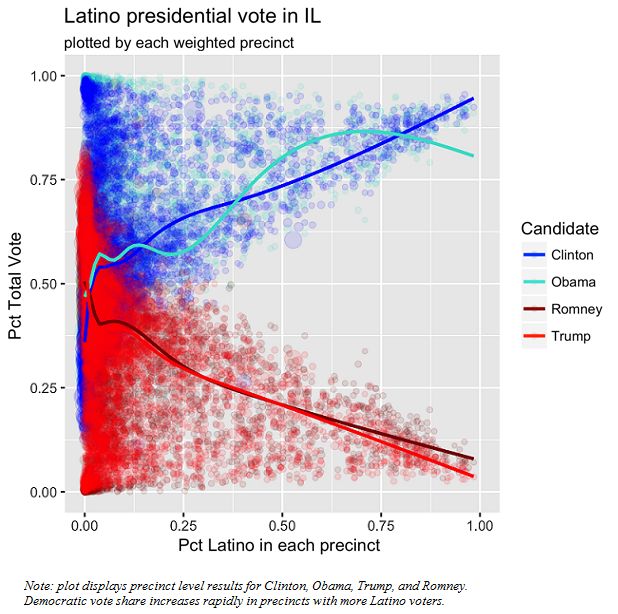Last March, anti-Trump protestors forced the cancellation of a campaign rally that Donald Trump had planned at the University of Illinois in Chicago. The group that organized the protest was primarily composed of young Black and Latino as well as immigrant rights activists. Trump would later blame the cancellation on ‘loosely organized…thugs.’ But, given his campaign’s attack on the immigrant community, what kind of reception did he expect? Long considered one of country’s most immigrant-friendly political destinations, the state of Illinois and in particularly Chicago, has historically embraced and provided a platform for immigrant integration in governing structures. For example, in 2011, Illinois became the first state to opt out of the Department of Homeland Security Secure Communities program; in 2011, it passed its own Dream Act; in 2011, the city of Chicago established the Office of New Americans including the adoption of the first municipal Welcoming City Ordinance. In light of deportation threats, Mayor Rahm Emanuel even affirmed the city’s position of remaining a sanctuary city.
Yet despite Trump’s continuous use of offensive rhetoric towards Latinos in the United States, and a broad and visible protest movement from many young Latino organizers in Illinois and throughout the U.S., many were surprised to learn that Latinos reportedly cast 28% of their votes for Trump on November 8th, a stronger showing for Trump than for Mitt Romney in 2012. Using actual election and demographic data from 6,203 electoral precincts in 15 different counties across Illinois, we show that the Edison Exit Poll is vastly overestimating the Latino vote for Trump. According to our estimates, Trump received less than 10% of Latino support in the Land of Lincoln, a historic low for the Republican Party.
Presidential election year reporting rarely covers Latino voters in Illinois, a reliable Democratic state, choosing instead to cover Latino-heavy battleground states like Colorado or Nevada. Yet, Illinois has the fifth largest share Latino population in the United States with about 2.2 million residents. Of those 2.2 million about a million are eligible to vote. And Illinois Latinos do flex their political muscle. Latinos are concentrated in and around the Chicago metropolitan region, and have helped sent some of immigration reform’s strongest proponents, like Luis Gutierrez and Jan Schakowsky to Congress. Others that have stood up to federal immigration policy include Cook County president Toni Preckwinkle and Commissioner and former mayoral candidate Jesus “Chuy” Garcia.
How did Illinois Latinos vote in 2016? If you read post-election reporting using Edison Exit poll data, you might expect that Latinos were not as bothered by Trump’s campaign rhetoric as pundits expected. While the exit poll did not sample enough Latinos in Illinois to make a state-specific estimate (which is worrisome in itself), it found that 34% of neighboring Wisconsin’s Latinos, 38% of Michigan’s Latinos, and 26% of Iowa’s Latinos voted for Trump.
Actual voting returns in Illinois suggest that the number in Illinois is closer to 8% for Trump (and we suspect much lower in Wisconsin, Michigan, and Iowa). Here’s how we calculated that number. First, we gathered certified precinct-level election results from the county board of election websites for 15 counties across the state, including all of Chicago and suburban Cook county, Coles, Dupage, Kendall, Lake, Macoupin, Tazewell, and others (the full dataset, which includes all the counties sampled, can be found here). In total, our 2016 dataset has the voting returns from 6,203 urban, suburban, and rural precincts. Unlike polls, which rely on small samples of self-reported vote intention (or actual votes), we have the actual vote returns of more than 3.6 million voters across the entire state.
Next we gathered demographic data for each precinct from a proprietary campaign data vendor, Catalist. Catalist uses voter files, surname matching, and other tools to estimate the race of each voter in each precinct.
With this data, we were able to calculate reliable estimates of how Latinos voted in the state of Illinois. We used a statistical technique that allows us to infer individual level voting behavior from aggregate results. The technique is called ecological inference (EI) and was developed by Harvard Political Science Professor Gary King. EI is the gold standard for estimating racial voting and has been used in voting rights cases around the country.
In this plot, we display the estimated Latino vote for Clinton using EI, 92%, as well as a line indicating the findings of Latino Decision’s election eve poll at 86% support for Clinton. Our results suggest that the probability that Trump received more than even 15% of the Latino vote in Illinois is virtually zero.
We also plot the precinct results for 2012 and 2016 to compare election returns for Clinton, Obama, Trump, and Romney in Latino heavy precincts. We show that Clinton not only did about as well as Obama across the state, but in precincts with larger Latino voting populations, Clinton exceeded Obama’s vote share. Similarly, Romney out performed Trump in Hispanic heavy precincts. Not only was there a decrease in Latino votes for Trump, but overall voter turnout was much higher in the most heavily Hispanic precincts in Illinois, adding about 100 more voters per precinct over 2012.
Our results for Illinois are consistent with other analyses of the Latino vote across the country. The exit poll in Arizona estimated about 31% Latino support for Trump. Analysis of actual voting data suggests the number is closer to 15%. In Texas, the official estimate was 34%. Election data suggests it was closer to 18%. In Nevada, exit polls overshot by about 20 points, in New York by more than 13 points, in California by 8 points, and in Florida by 4 points. Together, these findings cast doubt that Trump could have won a larger share of Latino votes than Romney in Illinois or nationwide.
Voting patterns drive policy choices at the local, state, and national level. To accept the 2016 exit poll results sends the message to elected officials and party elites that Latinos can be insulted and dismissed and yet, they can still win a sizeable share of their vote. This can’t be further from the truth. The evidence in our analysis demonstrates that Latino voters do care about how they are treated. They did vote. And they gave Trump the lowest share of the Latino vote of any major party candidate in recent history.
This post initially appeared as part of a series of city analyses by Latino Decisions.
Jaime Dominguez, Ph.D. (@_JaimeDominguez) is on the faculty in political science at Northwestern University. Tyler Reny (@tylerreny) is a doctoral student in political science at UCLA.



